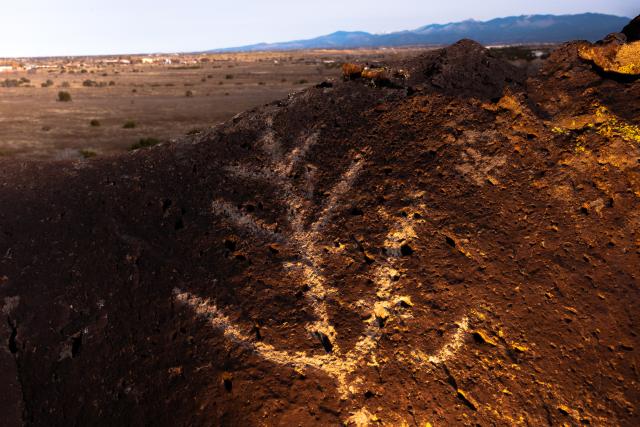During Native American Heritage Month, a Recognition of Indigenous Connections to the Land
By Derrick Henry, Public Affairs Specialist
Knowledge is most valuable when passed on and used to improve our world. This is especially true of Indigenous knowledge developed and passed down since time immemorial on land now called the United States, ten percent of which is managed by the Bureau of Land Management.
As more scholarship has developed in response to the climate crisis, loss of biodiversity and environmental injustice, the need to prioritize Indigenous knowledge is more important than ever. This on-the-ground knowledge was developed long before European contact, and now there are opportunities to use this knowledge to improve land management decisions.
America has not always delivered on its promise of equal dignity and respect for Native Americans. For centuries, broken treaties, dispossession of ancestral lands, and policies of assimilation and termination sought to decimate Native populations and their ways of life. These actions also drove to the margins knowledge about the land, information that remained stored in the traditions, stories, and languages of Indigenous people nationwide.

At the BLM’s La Cieneguilla Petroglyph Site near Santa Fe, New Mexico, rock art along a mesa reveals a familiarity with the surrounding landscape. Depictions of flute players, animals, and plants, engraved long ago, are now mute witnesses to contemporary times. What knowledge must have driven the work crafted by populations here and elsewhere who saw droughts, floods, and wildfires; who went through good times and bad times; who structured families, communities, and civilizations, then passed along that comprehension to new generations.
“Land and people are interdependent. In fact, they are one and the same essential matter of Existence. They cannot be separated and delineated into singular entities,” writes distinguished Acoma Pueblo poet Simon Ortiz in his introduction to the 1998 Native American writing collection Speaking for the Generations. “If anything is most vital, essential, and absolutely important in Native cultural philosophy, it is this concept of interdependence: the fact that without land there is no life, and without a responsible social and cultural outlook by humans, no life-sustaining land is possible.”
At the Bears Ears National Monument in southeastern Utah, the BLM, U.S. Forest Service, and five Tribes of the Bears Ears Commission this summer formalized a partnership for co-management of the monument, an agreement intended to protect Tribal interests and further the nation-to-nation relationship with Tribal Nations. It is a way to revitalize Indigenous connections to the land, and then use the resulting knowledge to inform land management decisions.
The agreement envisions using knowledge not otherwise available to land managers to strengthen the management of Bears Ears. The parties serve important roles in the planning, management, conservation, restoration, and protection of lands within the monument, as well as in the protection of ceremonies, rituals, and traditional uses that are part of the Tribal Nations' way of life on these lands.

This summer also saw a unique artist in the BLM’s Artist in Residence program who showcased this interconnection: Navajo jazz musician Delbert Anderson and his band D’DAT took their unique style of jazz, funk and hip-hop, buttressed by Navajo harmonies, to BLM sites in Colorado, Utah, Oregon, California, and New Mexico. Their music and workshops, based on traditional Navajo songs and chants designed to adapt to changing times, reflected the capacity for knowledge to unspool across generations and tie-in with the moment.
Native Americans have always expressed a strong connection to the land. You see that in art. Hear it in music and song. Smell and taste it through traditional medicines, spices, and food. And feel it in places where the original stewards of these lands centered their lives while the moon and stars cycled into sun and sky year after year.
During National Native American Heritage Month, as we celebrate Indigenous peoples past and present, we also want to emphasize that we respect and value Indigenous knowledge, and work to incorporate it into all our efforts. Knowledge is indeed most valuable when passed on and used to make things better. And when pursued, knowledge and its beneficial use makes us more human.
We hope you will take some extra time this month to seek out Indigenous stories, learn about the cultures and practices, and appreciate the richness that Indigenous people bring to our diverse country.
Related Stories
- From the Open Range to the Las Vegas Lights Meet Cinder from South Steens
- BLM Colorado hosts biannual Ute Tribal Consultation meeting at Canyons of the Ancients National Monument
- True Grit: Whitney's Journey to BLM's Partner Hosted Mustang Challenge Event
- State summits collect valuable input for implementing BLM’s Recreation Blueprint
- Video: Reimagining restoration in the San Luis Valley
